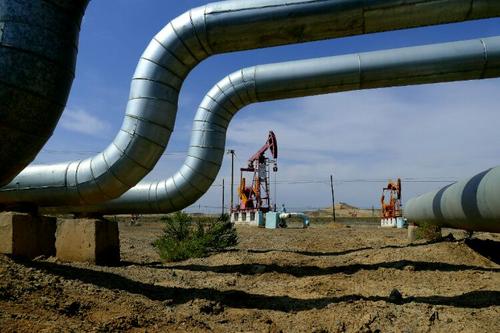Article Archive
Article Archive
- Introduction of Cement Slurry System (Part 1)
- Introduction of Cement Slurry System (Part 2)
- Introduction of Cement Slurry System (Part 3)
- Introduction of Cement Slurry System (Part 4)
- High Temperature and High Pressure Cementing Technology
- Low Density Cementing Slurry Technology
- Anti Gas Channeling Cementing Technology
- Drag Reducing Agents (DRA) or Drag Reducers (DR)
- Nitrogen Surfactant Compound Huff and Puff Technology
- Oil Washing Technology for Increasing Production
1. Pour point reduction and transportation of crude oil
2. Rent reduction and transportation of crude oil
3. Evaluation method of crude oil drag reducer
Pour point reduction and transportation of crude oil
Two reasons for the loss of liquidity of crude oil
(1) As the viscosity of crude oil increases with the decrease of temperature, when the viscosity increases to a certain extent, the crude oil loses fluidity.
(2) It is caused by wax in crude oil. When the temperature decreases to the wax precipitation temperature, wax crystals precipitate. With the further decrease of temperature, the number of wax crystals increases, grows and condenses until a structural network covering the whole crude oil is formed, and the crude oil loses fluidity.
Classification of crude oil by freezing point
(1) Low pour point crude oil
It refers to the crude oil whose freezing point is lower than 0 ℃. In this crude oil, the mass fraction of wax is less than 2x10 -²
(2) Condensable crude oil
Crude oil with a pour point lower than 0-30 ℃, in which the mass fraction of wax is 2x10 -²- 20X10 -² Range.
(3) High pour point crude oil
Crude oil with a pour point higher than 30 ℃, in which the mass fraction of wax is greater than 20X10 -².
Crude oil pour point reduction method
1. Physical pour point reduction method
This is a heat treatment method. Firstly, the crude oil is heated to the best heat treatment temperature, and then cooled at a certain rate to reduce the freezing point of the crude oil.
(1) Effect of heat treatment on viscosity temperature curve of crude oil
a. After wax precipitation point, the viscosity of crude oil decreases;
b. The temperature range of crude oil with Newtonian fluid characteristics is widened, that is, the abnormal point is reduced.
After the abnormal point, the crude oil viscosity decreases with the change of shear rate.
|
Crude oil producing area |
W(wax)x10² |
W(Gum + asphaltene)*10² |
Freezing point before heat treatment/℃ |
Heat treatment temperature/℃ |
Freezing point after heat treatment/℃ |
|
Daqing Oilfield |
34.5 |
8.43 |
32.5 |
70 |
17.0 |
|
Zhongyuan Oilfield |
10.4 |
21.2 |
32.0 |
85 |
21.0 |
|
Jianghan Oilfield |
10.7 |
24.2 |
26.0 |
80 |
14.0 |
|
Huoshaoshan Oilfield |
20.5 |
20.9 |
20.5 |
70 |
7.0 |
From the above table: the freezing point of crude oil decreased significantly after heat treatment.
(2) Effect of heat treatment on viscosity temperature curve of crude oil
a. All wax crystals in crude oil dissolve, and wax decomposes in crude oil in molecular state.
b. The dispersion of asphaltene stack is improved due to the weakening of hydrogen bond and the intensification of thermal movement, that is, the size of asphaltene stack decreases, but the number increases.
c. The amount of gum adsorbed on the surface of asphaltene stack decreases due to the intensification of thermal movement, and the content of gum in crude oil increases accordingly.
Cause analysis:
The changes in the existing conditions of various components caused by crude oil heating cannot be recovered immediately when it is cooled. This means that when the crude oil is cooled to the wax precipitation point, the wax precipitates under the condition that there are more asphaltene stacks and higher gum content in the koji than before heating. Because asphaltene stack can act as crystal nucleus, and colloid acts through the mechanism of eutectic and adsorption with wax, the wax crystals precipitated from crude oil after treatment will be more dispersed and loose, and the ability to form structure will be weakened, so the freezing point of crude oil after heat treatment will be reduced.




